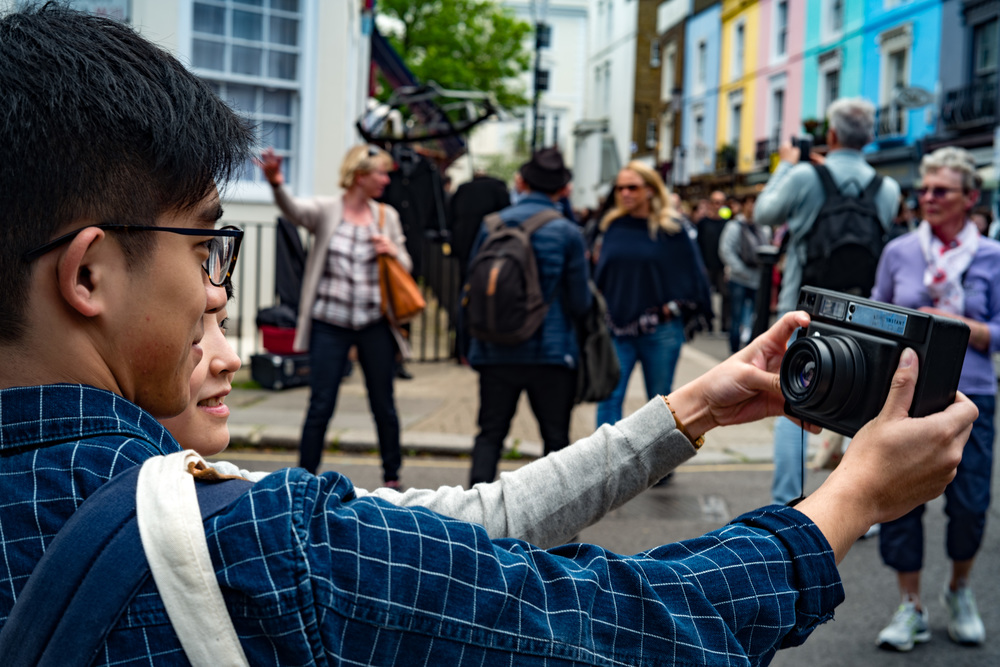
One of the big advantages of the Leica M system is the wide variety of lenses available. In addition to Leica itself, there are two primary alternative manufacturers, Zeiss and Voigtländer, both offering atttractive lenses at lower cost than Leica’s products. And when it comes to older, but still excellent, lenses you are spoiled for choice. The key is manual focus: These lenses seldom wear out and are not susceptible to the electronic gremlins that can beset modern glass.
The subject of this review is the classic 50mm f/1.5 Zeiss C-Sonnar. It is a new construction but based on a design dating from the early 1930s. It has an aperture range of f/1.5 to f/16 with one-third stops and a focus range of 90cm to infinity. With six element in four groups, it lacks a floating element, something that has a significant bearing on its performance on modern digital cameras. This brings both advantages and disadvantages.
I seldom get sentimental about cameras or lenses. They are a tool and they come and go. Some lenses I am determined to keep. Others I sell on a whim. But none has been more mourned than the pretty silver Zeiss C-Sonnar f/1.5. I regret selling it bitterly.
At the time, I persuaded myself that I would go with the Leica Summicron because of the six-bit coding and general Leica harmony. It was a shortsighted move as I am now all too well aware. This is not because the Sonnar is a better lens than the Leica Summicron; it is more that it a characterful lens and one that is capable of impressive results, particularly in portraiture where many subjects often do not like the more clinical approach of some modern designs.

When Adam Kidman at Zeiss in Cambridge emailed to say there was a black Sonnar that I could borrow for two weeks I was delighted. Here was a chance to discover whether my regret at selling the lens was justified, or whether I was merely squinting through those rose-tinted glasses that are often dangling from my nose.
As soon as I unpacked the Sonnar I was reminded of what attracted me to it in the first place. It just looks right. In fact, dare I say it, that retro style looks more businesslike and interesting than the rather bland, modern image of Leica’s latest optics. The shiny black and chrome is offset by the red and white aperture and distance-scale engravings and the little blue mount-positioning dot that characterises all Zeiss lenses.

Despite the retro styling, the Sonnar is similar in size and weight to the slower Leica 50mm Summicron (63mm long, 250g) but 85g lighter than the Summilux with its similar fast aperture. Note, however, that the Sonnar is not supplied with a hood (it is an expensive extra) while the Summilux has a neat slide-out hood as standard.
Detail aside, the lens is small and neat. It makes a great all-round travel fifty, replacing both f/1.4 and f/2, in one rather gorgeous package. I haven’t mentioned price however. When you bear in mind that this high-quality, superbly crafted Zeiss sells new for around £850 (without hood) it begins to make a lot of sense. A new Summicron is twice the price while the more comparative faster ‘Lux is tagged around £2,500. The razor-sharp 50mm Apo-Summicron (compared with the Sonnar in this review) is a lot more expensive, nearer to £5,000.
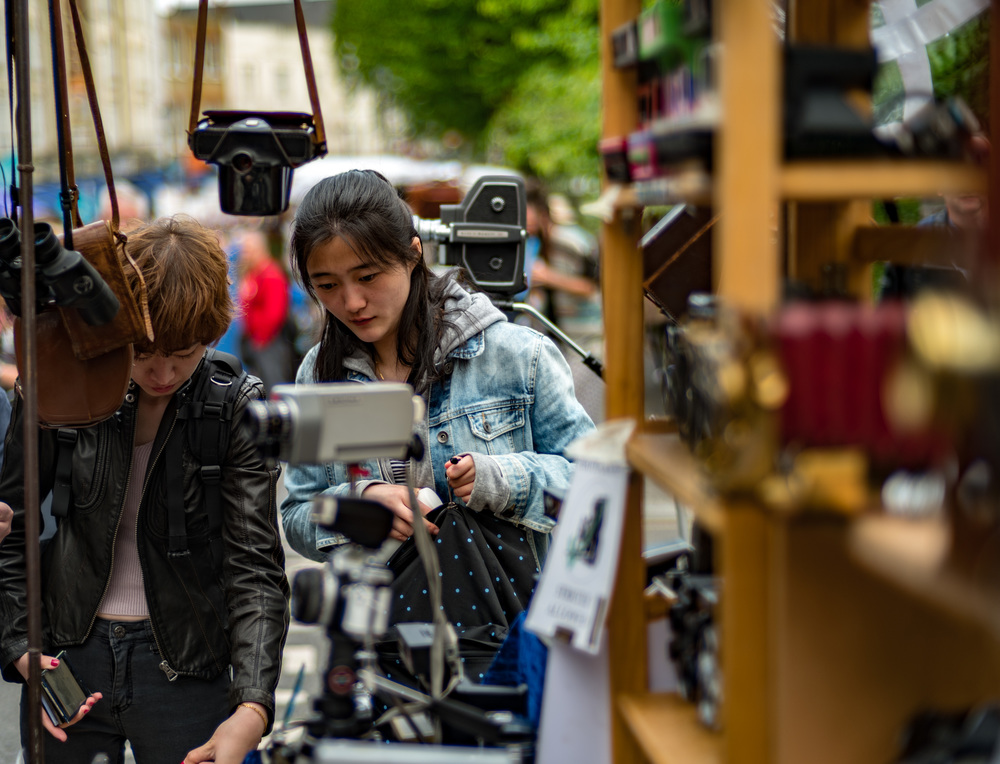
Sensible
So the Sonnar makes sense, either new or secondhand.
But this is the head talking. There is little doubt in anyone’s mind that the Zeiss makes a sensible buy. But how does it perform? We know it is renowned for being a “period” design—a description which is often used as a euphemism for a for softness. And it has something of a reputation for focus shift, a phenomenon that can often be mistaken for that same softness. Read any review of this lens and the writer will spend a lot of time detailing the focus shift and its wayward characteristics.

Despite this, in real-world shooting I found no obvious problems. I refer you to the accompanying examples. All fast lenses (including the 50mm Summilux and even more pernickety Noctilux) can be difficult to nail accurately on a rangefinder when attempting to shoot wide open. At such apertures the depth of field at minimum focal distance (90cm on the Sonnar, 70cm on the Summilux and 100cm on the Noctilux) is critical and you need a steady hand and a keen eye to be sure. Otherwise it’s a case of nose in focus, eyes out.

The Sonnar is no exception in needing care at its minimum distance of 90cm and at its widest f/1.5. As you will shortly see, focus shift does occur and needs careful consideration. The Leica lenses, both much more modern designed optimised for digital, are more easily handled. But I wouldn’t let this put me off the Sonnar. Treated carefully it is capable of outstanding results. This is just my opinion, for what it is worth.
Ergonomics
The Sonnar is a very comfortable lens. The aperture ring clicks satisfyingly and the focus is buttery smooth (to coin a new cliché). It has a rock-solid build that, to my mind, is every bit as good as that of Leica’s finest. The only real letdown is the missing hood (Zeiss didn’t even think to send one for test but I didn’t really miss it, despite the odd bit of flare in sunny conditions).
Instead of the substantial focus tab we know (and most of us love) from modern Leica lenses, the Sonnar has a small nub of a thing that, frankly, is neither one thing nor the other. It is perhaps useful for determining position of the focus when using zone calibration but pretty awful at piloting the ring. I’m not sure why they bothered.
Taken as a whole, though, this is a satisfying little lens to use and feels right up there with Leica in the quality stakes.

100mm Zeiss Sonnar
By a crafty piece of prestidigitation I also transformed this versatile little lens into a perfect portrait tool of 100mm.
It’s simple really: I used an adapter and bolted the Sonnar to the little PEN-F which, with its 2x cropped m43 sensor, doubles the focal length and makes the lens very useful for portraits.
The surprise is that, despite the added depth of the adapter, this lens looks totally at home on the little Olympus. It could almost have been made specially for the camera, so harmonious does it look. I fell in love with it over again when I saw it sitting there attached to what is arguably the prettiest mirrorless camera ever made.
The Zeiss can also be used effectively as a 75mm optic on APS-C cameras such as the Fuji X series. Indeed, this juggling with focal lengths on crop-frame sensors is a new-found joy and is to be recommended. It is now possible to carry one lens and three bodies on your travels and enjoy three different focal lengths. Just joking.
Focus shift
I wasn’t inclined to take the problem of focus shift too seriously. I thought of it as character and easily handled—in much the same sense as you might experience character when you drive an old Porsche, a pre-war Bentley or ride a 1915 Triumph.
Is focus shift something of a myth, forever permanently attached to this lens by repute? I decided to do my own rather unscientific research and realised I was wrong not to have taken it seriously. Focus shift is no myth. Indeed, this lens can sure shift. It is right up there with the 1935 Bentley. However, it isn’t a great problem in real-world photography and is mainly apparent at wide apertures used at close distances.
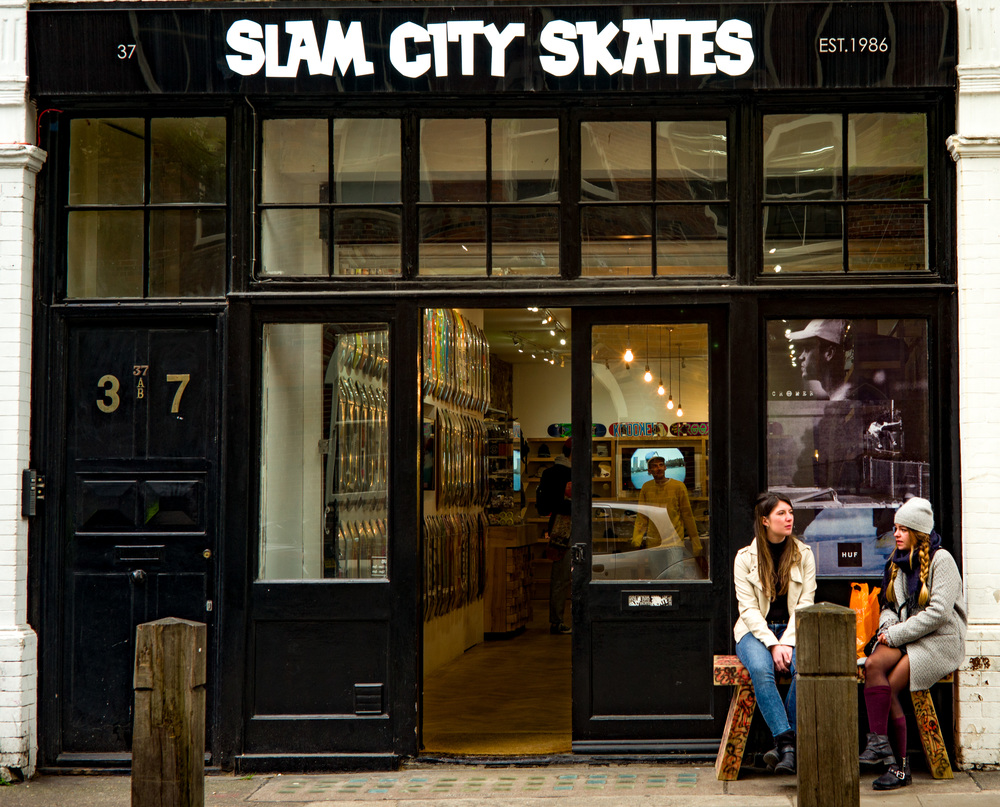
To take a more in-depth look at the problem I decided to compare it with two Leica fifties, the Summilux-M ASPH and the Apo-Summicron-M ASPH, both notably sharp lenses, and both serendipitously to hand.
Because the Sonnar has a 90cm minimal focal distance (while the more modern Leica lenses shoot down to 70cm), I levelled the playing field by positioning the tripod exactly 100cm from the subject—an unopened bottle of Dow’s port, as it happened. I decided on this post-supper tipple after considering various stepped arrangements (such as the tripod heads in the photograph below) which might have helped calibrate the difference between perceived and actual focus. The Dow’s has the advantage of looking pretty and of standing resolutely in place throughout the tests.
At such a small distance I found it very difficult to focus on the central white label on the bottle. It is no bigger than the focus pane in the centre of the frame. So difficult, in fact, that I screwed a x1.4 magnifier into the viewfinder and, even then, I realised that my eyes are no longer what they were. I prepared myself for an interesting few minutes. I set the focus at the widest aperture and simply changed the aperture without touching the focus ring.
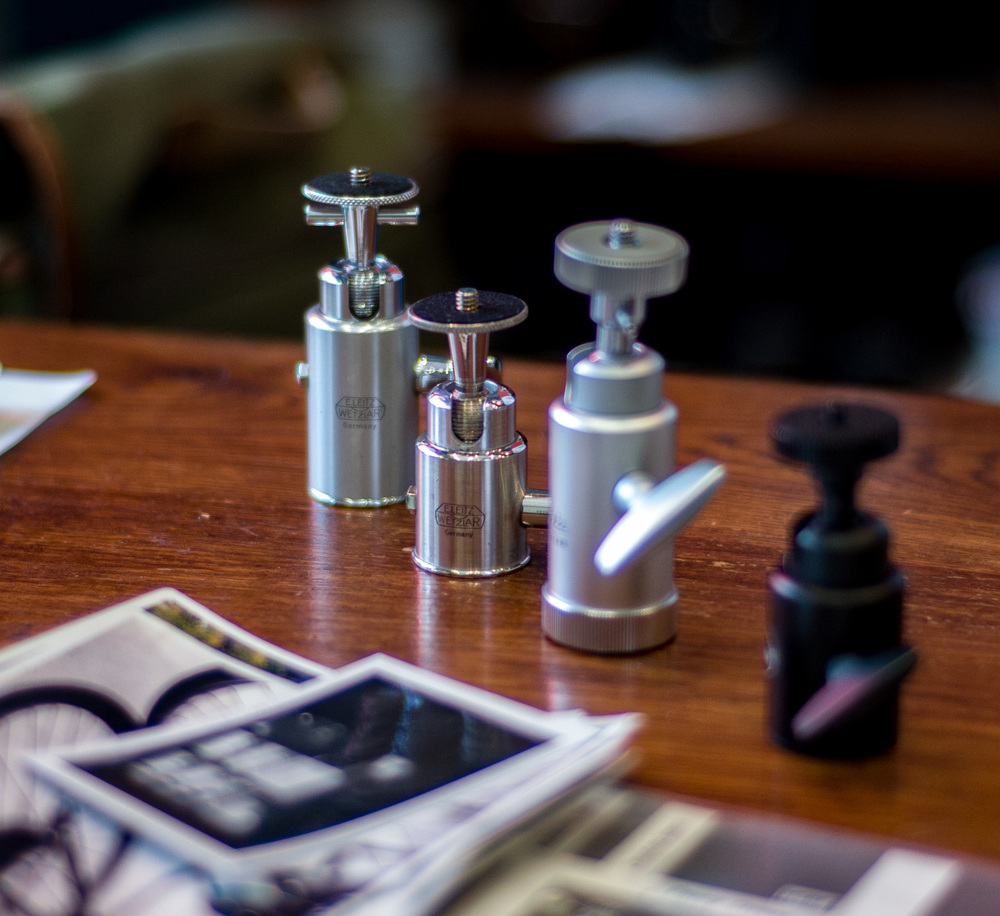
All the images below are cropped from the full 24MP down to 4MP, so they represent one sixth the size of the full frame. I did the test shots wide open (f/1.4 on the ‘Lux, f/1.5 on the Sonnar, f/2 on the Apo-Summicron) and at f/2, f/2.8 and f/5.6. Also, just to allay any suspicions that I was chimping on live view and not really using the rangefinder, all these shots were taken with the Leica M-D: Rangefinder only, no checking on results until the files were in Lightroom.
First the Apo, definitely the sharpest knife in the drawer….
Leica 50mm Apo-Summicron-M ASPH f/2
There’s nothing remarkable here, except to give me back a bit of confidence in my eyesight and my rangefinder focusing ability. Even at f/2 the focus is spot on and it doesn’t vary through f/2.8 to f/5.6. Click on the images to enlarge and you will see that focus shift is definitely not something you need worry about with this lens.
Now for the second Leica, the faster but older-design Summilux. With the much brighter f/1.4 maximum aperture, will this lens present any manual focus problems? In the past I have certainly treated it with respect, not because of any waywardness in the focus because of the very narrow depth of field which is shares with the Sonnar.
Leica 50mm Summilux-M ASPH f/1.4
Again, nothing much to complain about. In fact the Summilux is very comparable with the Apo in these shots, perhaps too much so as Adam points out. By now I was getting my focusing confidence back. Consistent results, once you get focus right at widest aperture, were clearly the order of the day. Both these Leica lenses are superb, totally calm and reliable workhorses.
Zeiss C-Sonnar T* 1.5/50 ZM
Finally, I came to the Sonnar. But I had to have two goes at it as you see. This is my first attempt, made under exactly the same conditions as the above Leica shots. Now before you check the first frame, I freely admit it is out of focus. Entirely my fault. But this sequence serves a purpose and that’s why I’m including it. First, though, my initial impression before I’d considered too deeply:
WOW! thought I (to borrow a phrase, three capitals and an exclamation from the irrepressible Steve Huff), this is what focus shift is all about. It’s alive and happening. That wide-open shot, despite my best efforts, is fuzzy to say the least. And f/2 isn’t much better. Surely, then, all the shots at other focal lengths should be fuzzy too? Not so, as you see by clicking on these images, the narrower the aperture, the sharper the image as the depth of field increases. The consistency of the Leica lenses throughout the aperture range is decidedly absent.
After two faultless sallies with the Leica lenses I am not sure how I could have committed such a sin. I’m not even sure if I erred to port or to starboard—something which gets to the nub of the problem when focusing the Sonnar and attempting a close-up portrait.
A second test was called for and I went through exactly the same motions. Could I improve sharpness by taking even more care with the focus at f/1.5? To an extent, the answer is yes, I could, although I am not sure what I did to deserve it. I suspect it was more by good luck than good management. In mitigation, I hadn’t even sampled the port. Yet after the image of DOW’S fluttering remorselessly across the focus panel for the past hour or so of squinting through the viewfinder, this is evidence of remarkable restraint on my part.
This time the wide-open image is far crisper, although not as sharp as the results from the two Leica M lenses. Furthermore, I detect slight degradation in focus as the aperture narrows. it is slight, however. Overall, though, a very creditable result for a noted “soft” lens. I suspect with more time and a third crack at it I could have done even better. The point is, though, I didn’t need any additional faffing around with the ‘Lux or Apo ‘Cron to achieve perfect results first time round.
How can these huge variances occur?
It’s difficult to say exactly what has happened here. I like to think that the second set of images more accurately reflects the capabilities of the Sonnar than does the top row. Perhaps the first shot was wildly out of focus and this became less apparent with the narrower apertures and resultant greater depth of field. They certainly show a variance in my perception of sharp focus as seen through the rangefinder.
What I can conclude is that the Sonnar is characterful to the point of temperament. Even when you take great care to focus accurately at f/1.5 you are not absolutely sure of nailing it: Just a little to port or starboard and you could have that perfect picture, but stand by the mainmast and it’s anybody’s guess what you will get.
But, significantly, these are problems at close-focus ranges of around 100cm. Other shots in this review were taken at longer distances and, to a large extent, the odd problem with focus shift is not noticeable. It is a constant worry with close-up portraits, however.

By comparison, the two Leica lenses are paragons of virtue, willing to accede faithfully to your every whim with nary a tantrum in sight. There is definitely something different, a tad more errant, in the behaviour of the Zeiss. Yet this can also be fun; it adds a little spice to your photography.
By the by, lest you are left with the impression that focus shift is a peculiarity solely of Zeiss Sonnars, I can refer you to the pre-FLE Leica 35mm Summilux. Both Jonathan Slack and William Fagan have pointed this out. As Jonathan says:
Another lens which has nearly as severe focus shift is the previous version of the Leica 35 Summilux—which is why they brought out the FLE version with the floating element. Of course, the 50 Summilux ASPH also has a floating element. Focus shift is a real issue with fast lenses which don’t have a floating element, but it’s surprising how easily it’s missed.
William adds more weight to this argument:
I have a 35mm Summilux ASPH (pre FLE) which illustrates this perfectly; the lens is a well known ‘shifter’. Absolutely sharp at f/1.4, softer at f/2, worst at f/2.8 and f/4 and starting to improve at f/5.6 and perfect at f/8 where depth of field is sufficient to cover everything. Distance to subject also increases depth of field and your experience reflects this.
As I understand it, in this modern bokeh-mad world, lenses are generally optimised for wide open shooting at minimum focus distance or thereabouts. One thing I have found is that my 35 mm Summilux is generally very good at all apertures for film (because of the thickness of the film) but it is more inclined to shift with digital where tolerances are much less. This would explain why lenses which were once very popular have now become problematic with digital. The FLE design is intended to compensate for focus shift and to meet the demands of digital.
Apart from needing a large glass of that Dow’s after all these exertions, I can concur with the general prejudice that the Sonnar is noted for focus shift. But, get away from these test-bed conditions and use the lens in the real world and you will be delighted by its character and rendering. Fret not, most times you won’t come across problems and you will be wholly impressed by the results coming through this little lens.

It is necessary to mention the complementary issue of optimum focus settings on the Sonnar. It seems that some Sonnars are optimised for focus at f/1.5 while others are set for best results at f/2.8. I wasn’t able to determine which of these settings graced the test lens so I can only refer you back to the above images. Jonathan Slack, who owns and loves the Sonnar despite is peccadillos, tells me that he raised this issue with the factory and received an explanation of sorts:
Out of the factory the C-Sonnar always comes with an adjustment of its flange focal distance to be the best compromise regarding focus shift at all f-stops and taking distances. For most applications this is the perfect adjustment for 95% of our users. If the C-Sonnar is to be used at f/1.5 and at closer distances, a different adjustment of the FFD could be considered. The calibration is free as long as the lens is under warranty, otherwise it costs €100.
It seems to me that the whole point of owning a fast lens is to use it at wider apertures and, often, at close distances to maximise that image separation so typical of a true light-vacuum. With the C-Sonnar, then, such work needs a bit of care and a wet finger in the wind.

Conclusion
Despite my best efforts I have ended up waffling on too long about focus shift. It is certainly an interesting phenomenon with the Sonnar. But it is by no means the defining characteristic. The Zeiss has character by the bucketful and it will produce photographs you can be truly proud of. As a general-purpose fifty with a particular bent for portraiture, the Sonnar is one of the best.
I regretted selling mine and, after using the lens again for the past couple of weeks, I regret it even more. I would love to have this little lens back in my stable. But with the Apo-Summicron and the Summilux already parked on the shelf, I am pretty well fiftied out for the moment. As I focus one of the Leicas, though, I will spare a thought for the excitement that comes with using a true free spirit.
If you are in the market for a first-rate standard focal length lens with a dollop of tradition and character, look no further than the C-Sonnar. Forget the out-of-focus bottle of port and get out there and grab some great shots.
If you want to read a more detailed test of the C-Sonnar I can recommend my friend Hamish Gill’s learned arguments at 35mm.com
____________
- Subscribe to Macfilos for free updates on articles as they are published. Read more here
- Want to make a comment on this article but having problems? Please read this


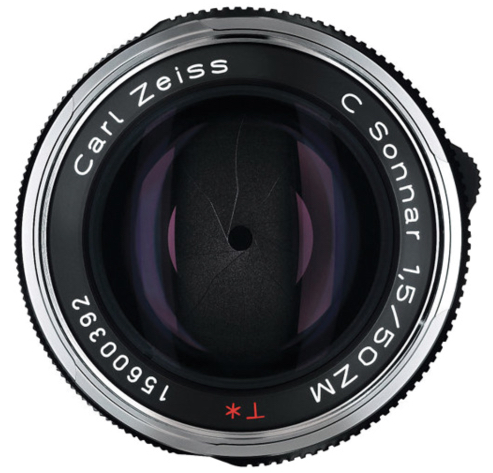
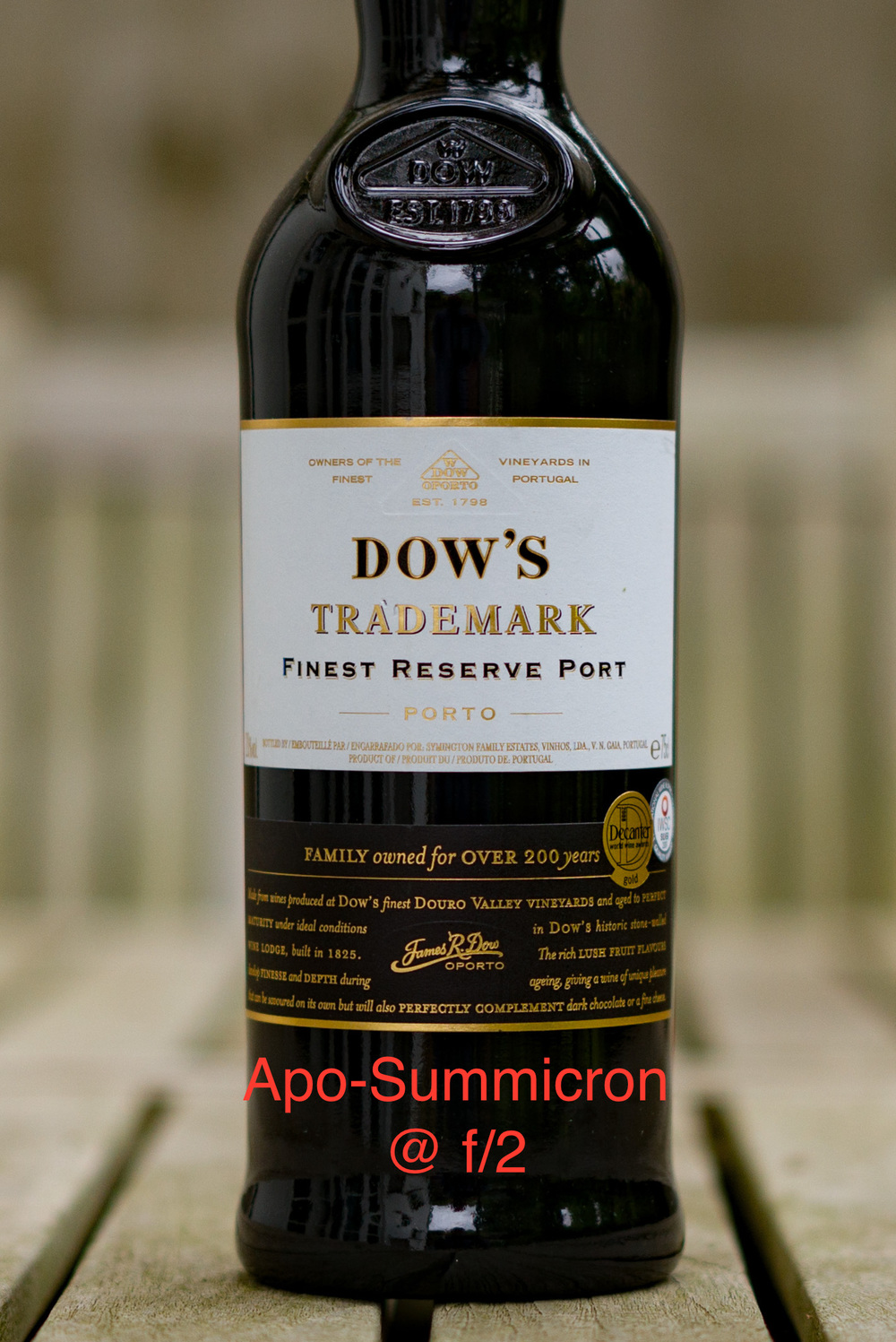

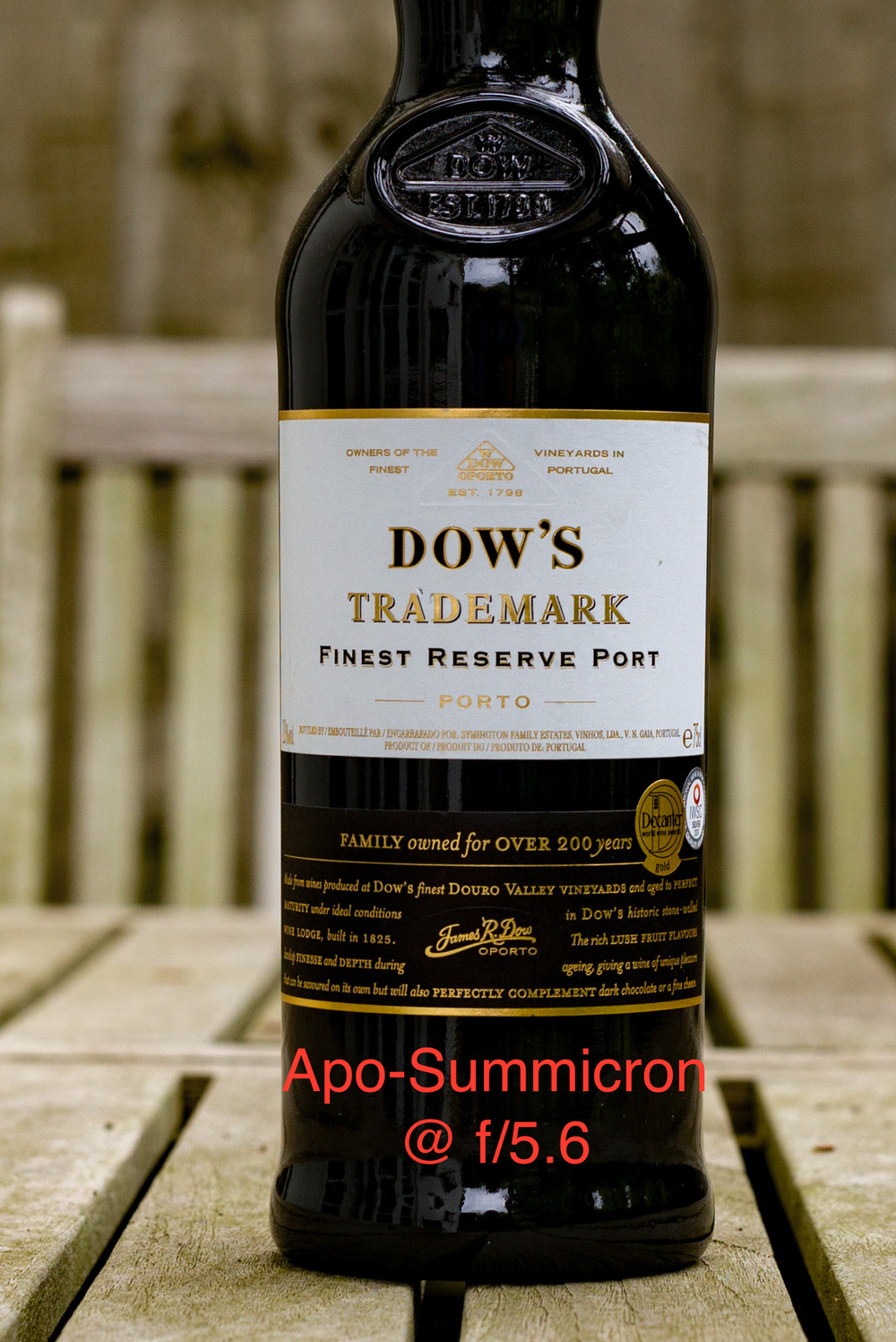
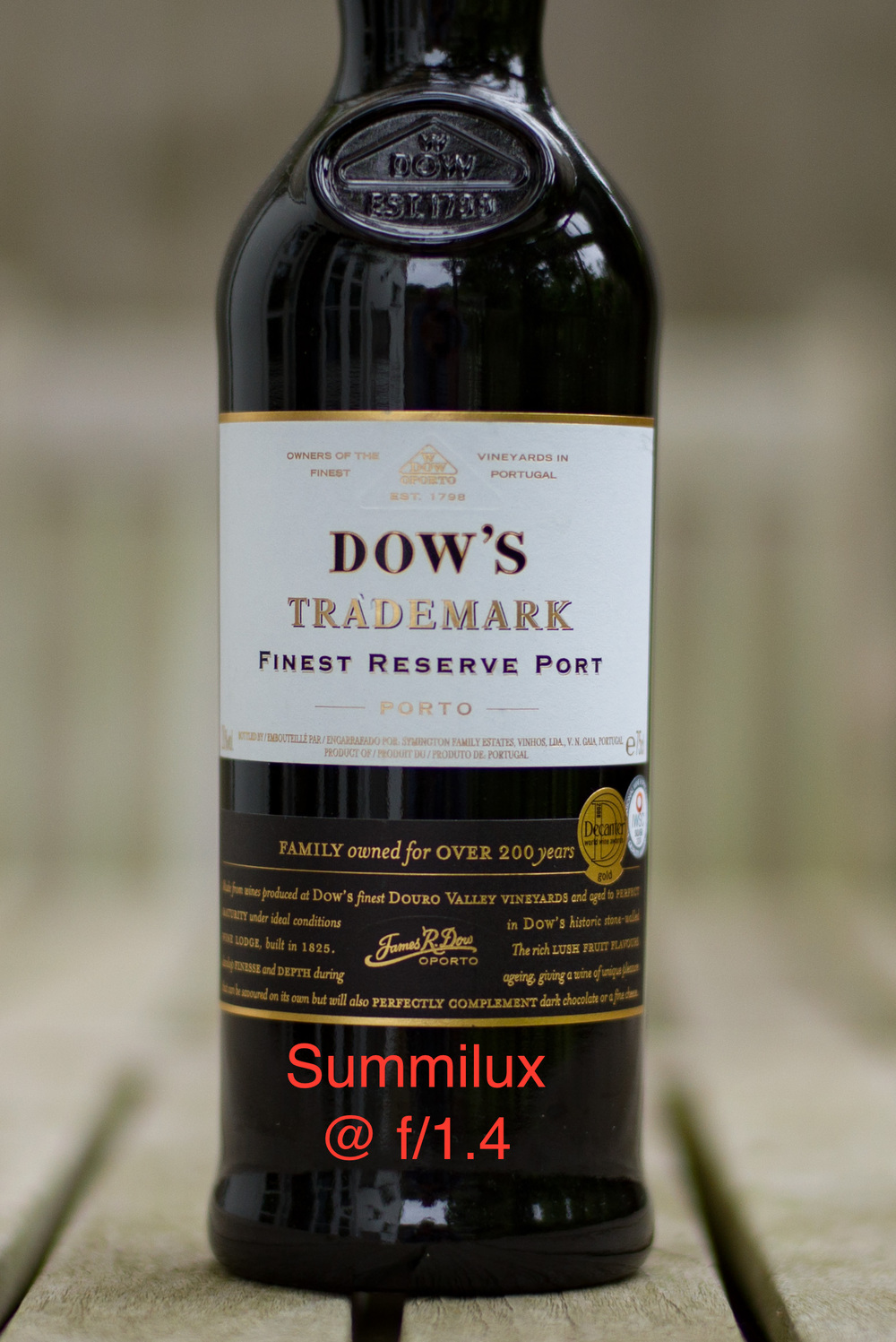
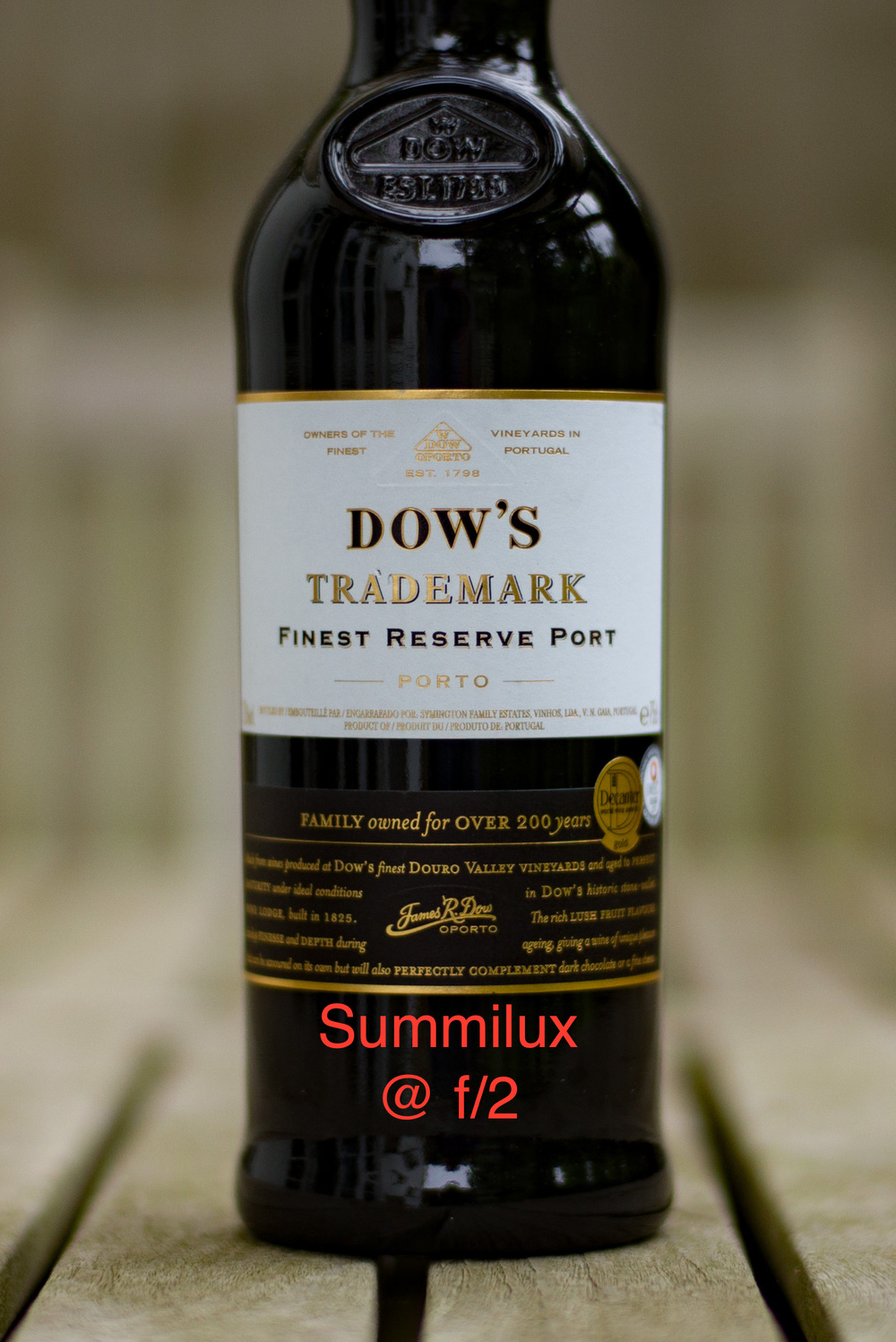

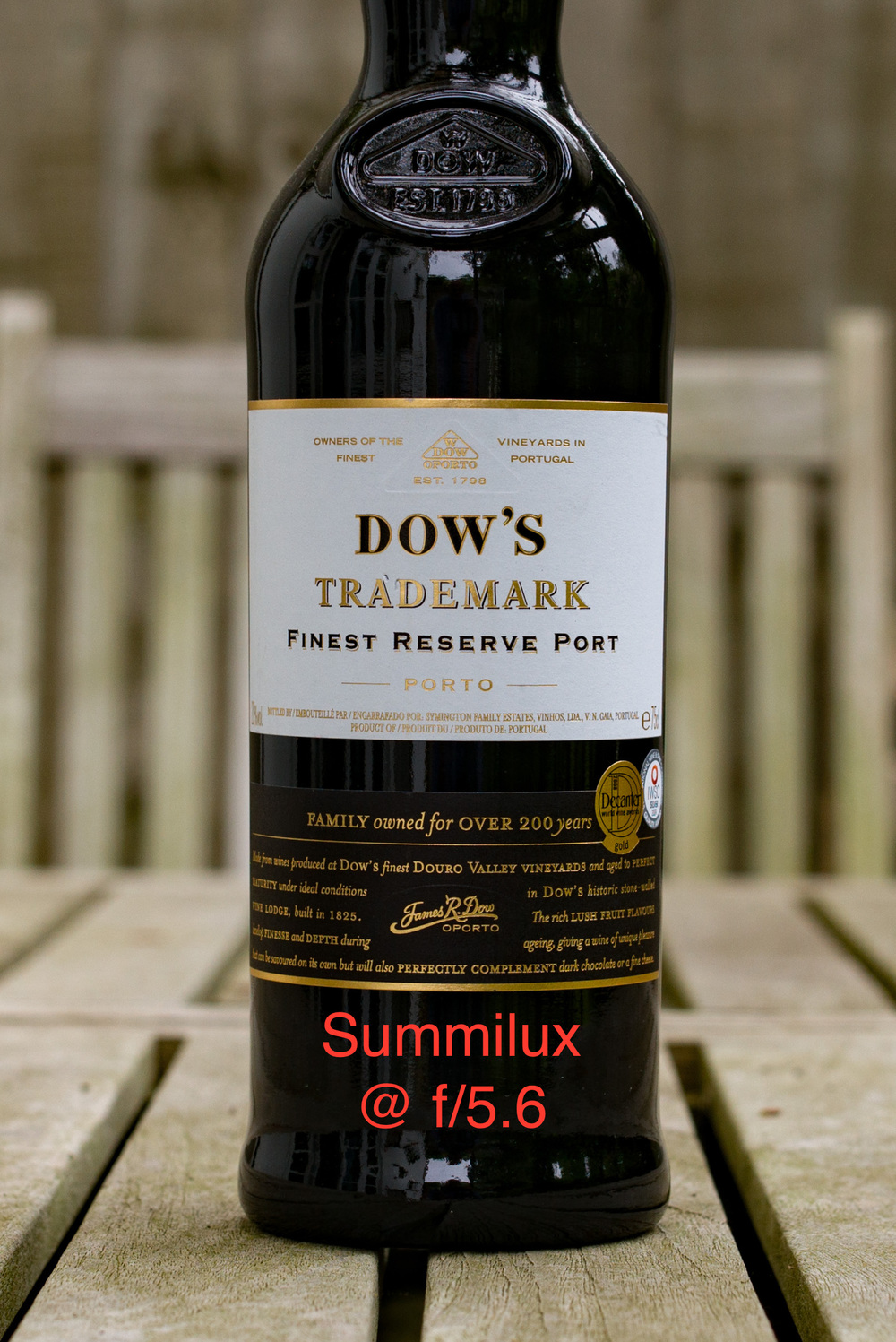
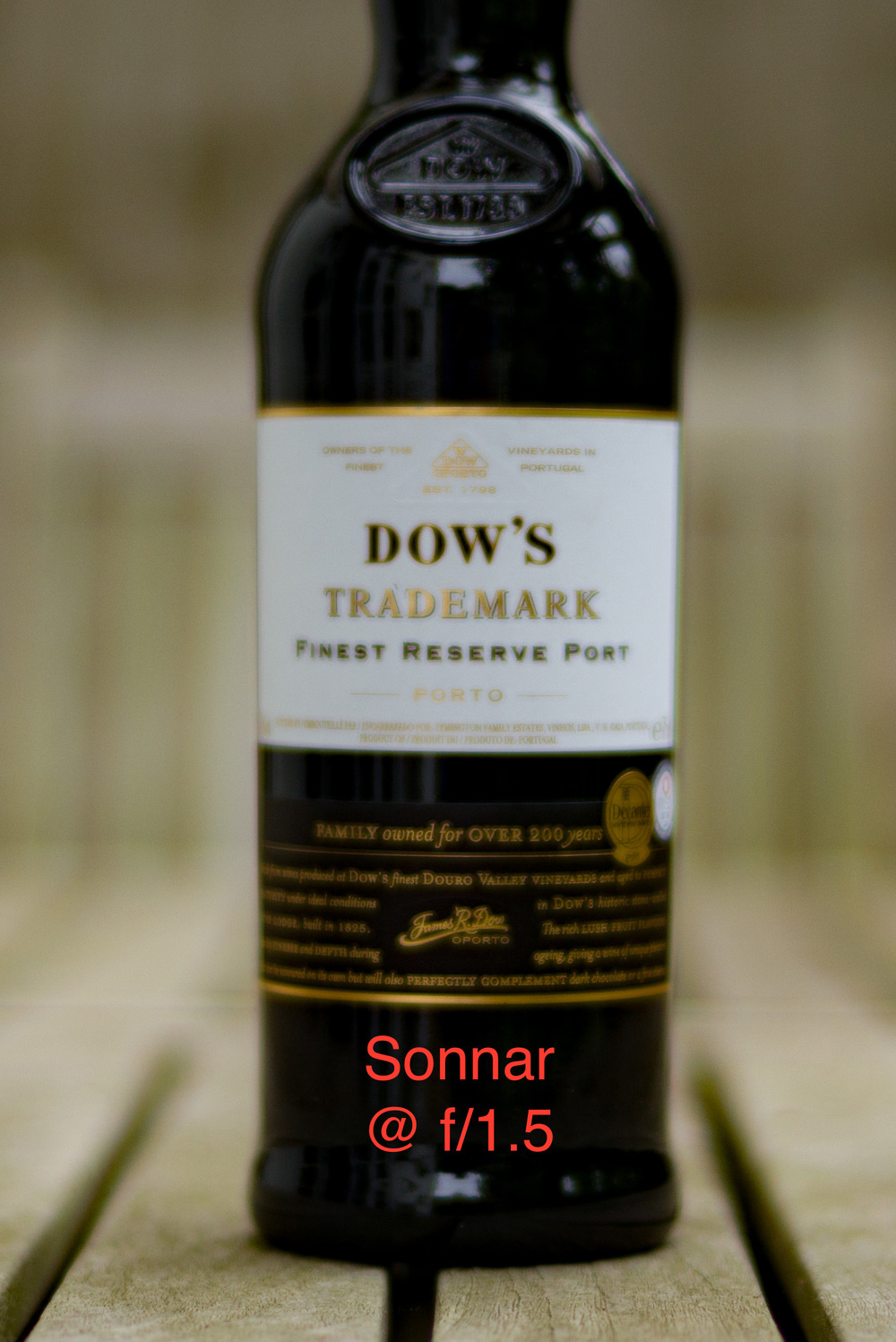
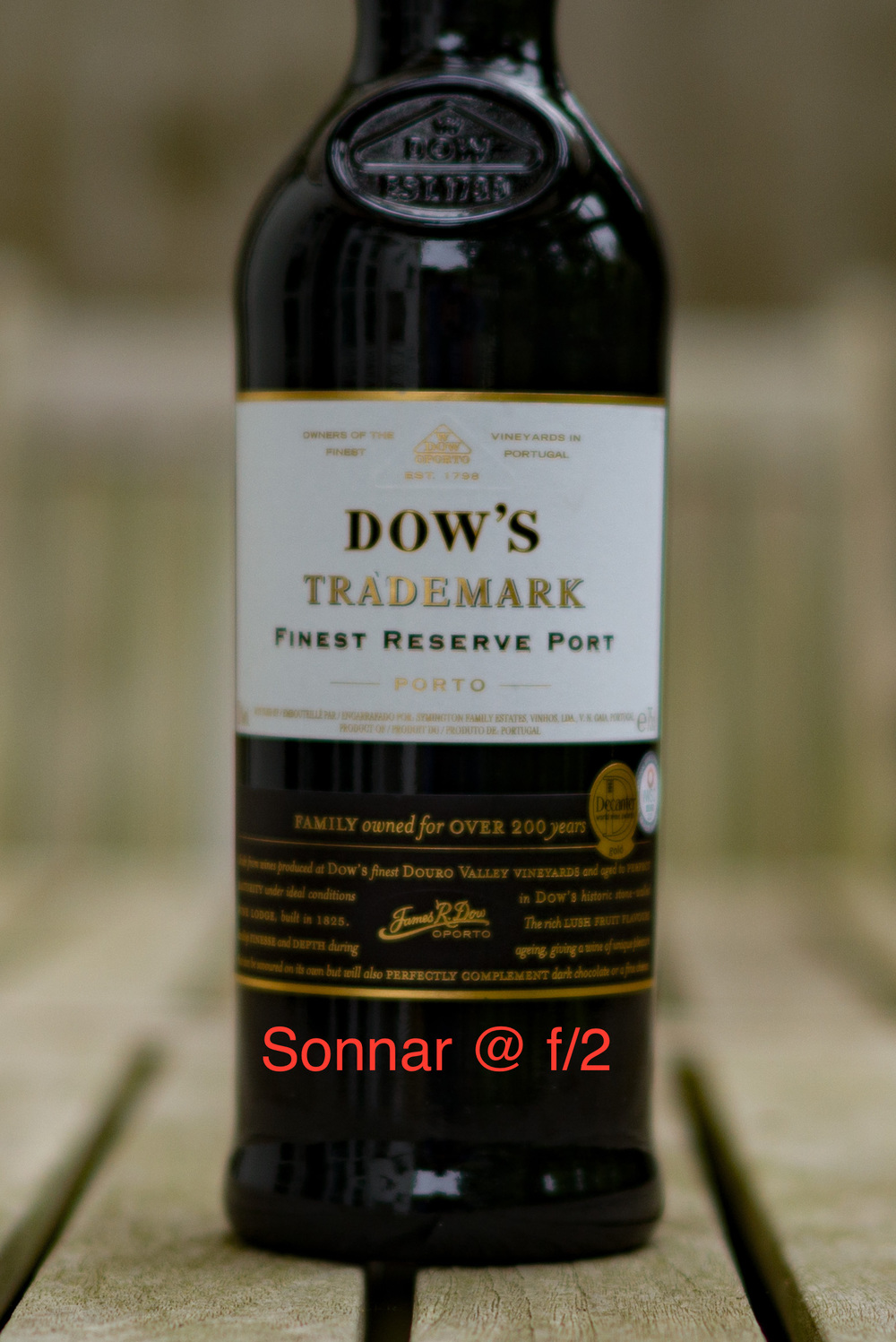
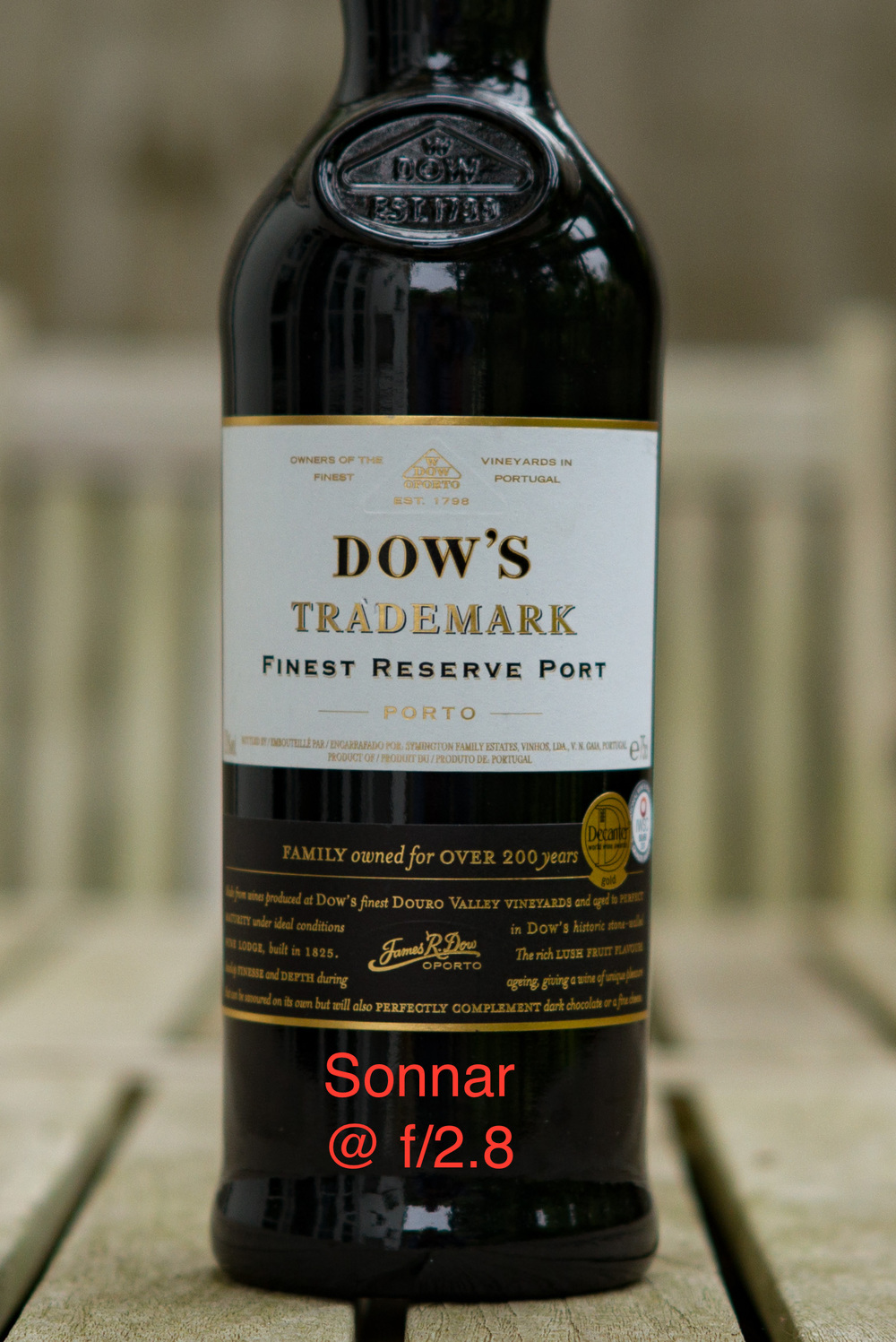
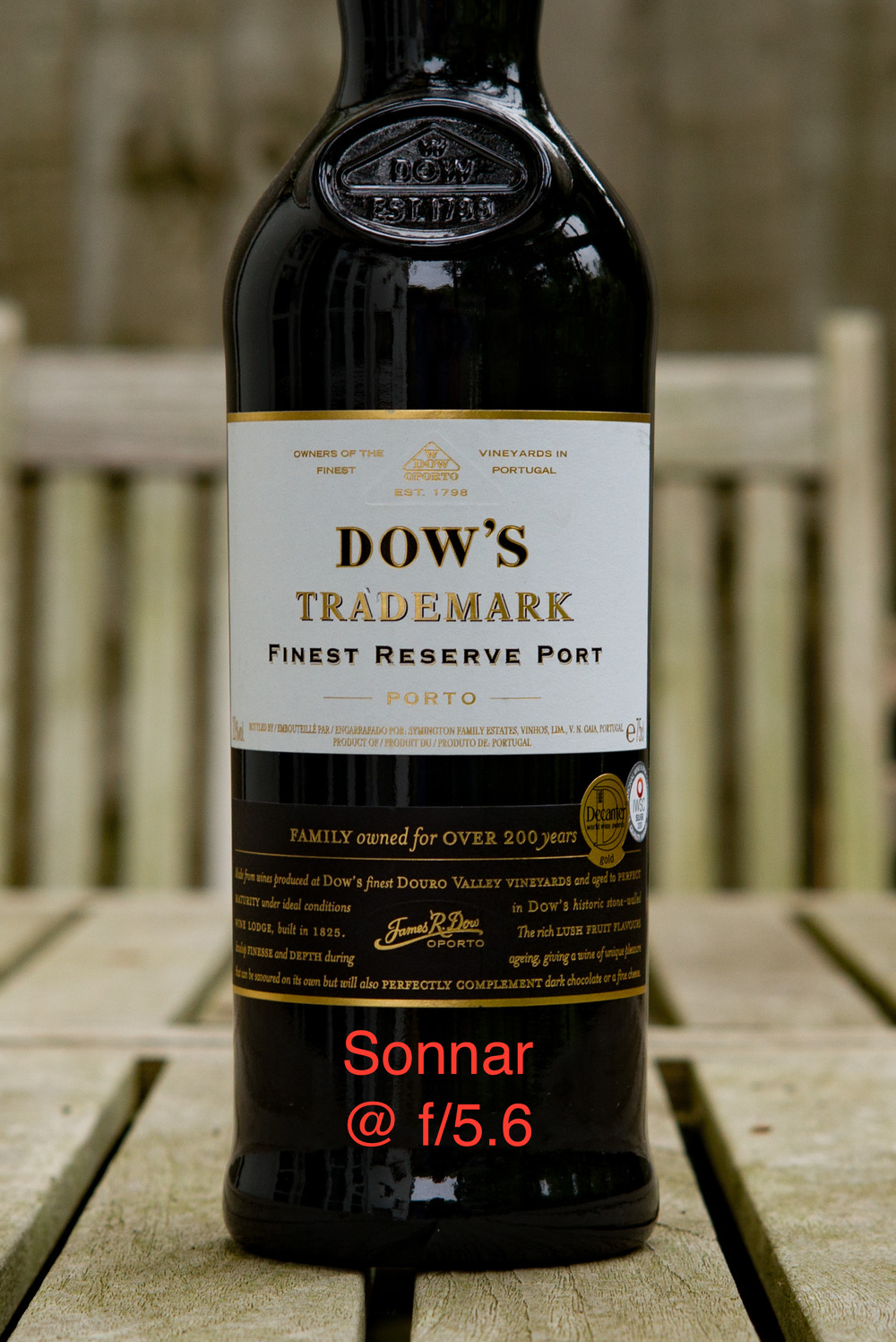
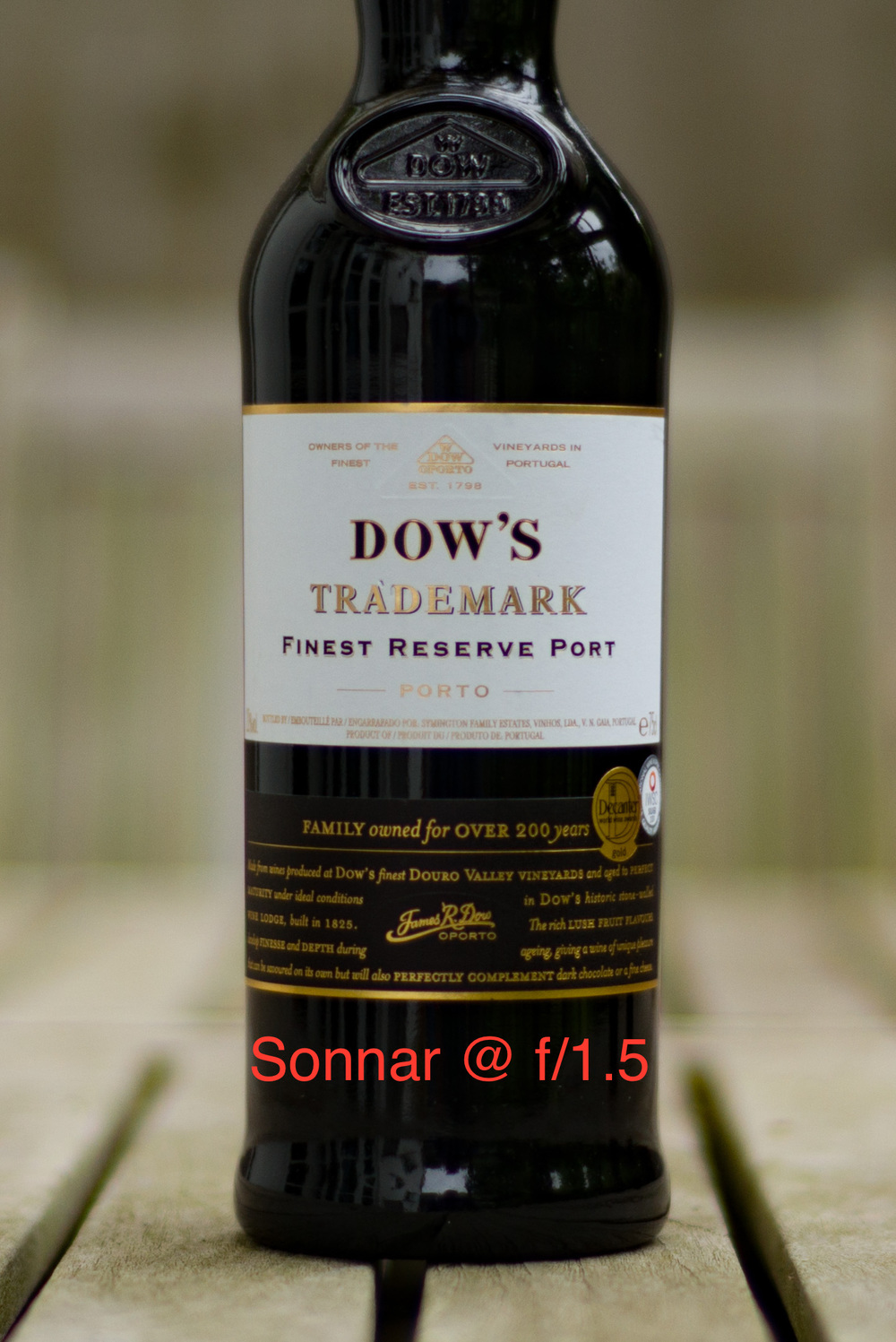
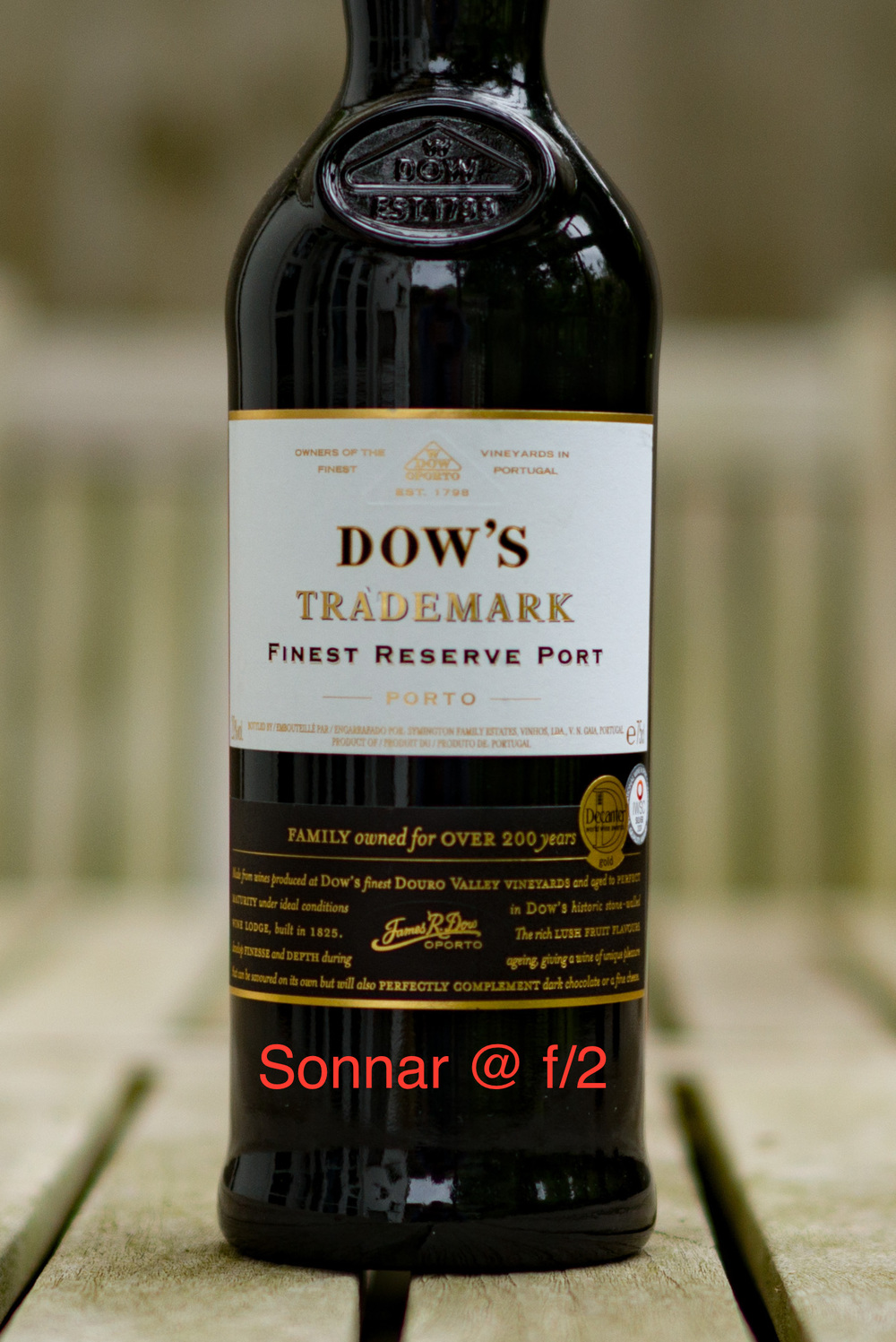
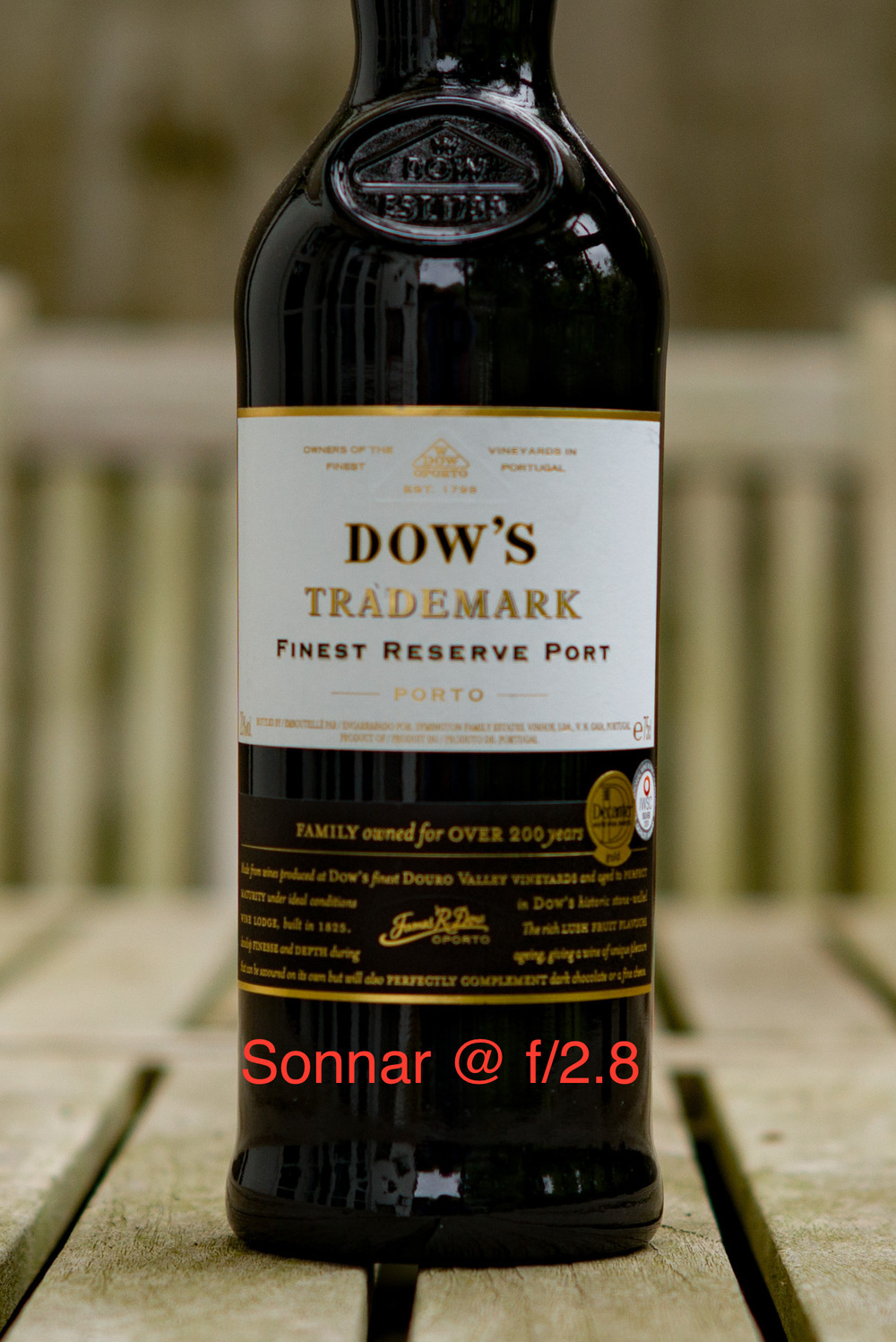
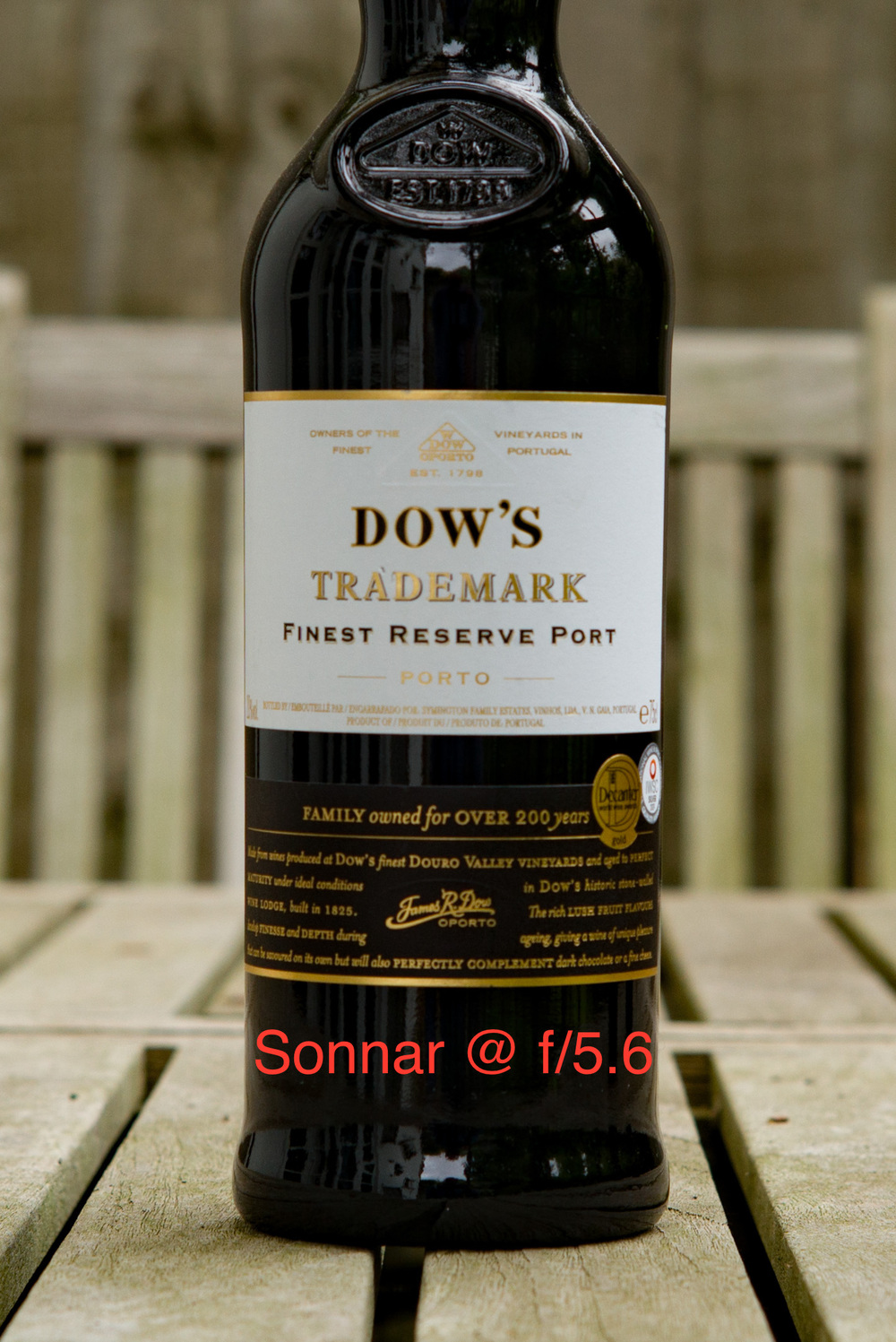
“I have a 35mm Summilux ASPH (pre FLE) which illustrates this perfectly; the lens is a well known ‘shifter’. Absolutely sharp at f/1.4, softer at f/2, worst at f/2.8 and f/4 and starting to improve at f/5.6 and perfect at f/8 where depth of field is sufficient to cover everything. Distance to subject also increases depth of field and your experience reflects this.”
This is not true at all. I had my pre Fle adjusted from Leica, and than tested it against the FLE…using the Monochrome CCD and a tripod, self timer, and there been NO FOCUS shift, testing 0.7/1.5/3 and 5m. And sometimes it is the User s fault, one of my shoot the FLE was less sharp…
I am learning photography on my PenF. A few days ago, I shot with a Leica M 240 for the first time, and fell in love with the colour rendering and contrast. Would I get similar images by using Leica lenses like the Zeiss on my PenF? Would you recommend any other Leica lenses as well that would give that magic look on my PenF? Thanks for any advice!
Thanks for your interest. While I think Leica lenses have a role to play, the main reason for the "Leica look" must be the combination of sensor and image processor. Most Leica, Zeiss or Voigtländer M-mount lenses will work on the PEN-F but you will need to experiment to see if you are happy with the results. One of the biggest obstacles is the crop factor with micro four thirds. Most M-mount lenses become end up being too long, given the 2:1 crop. Unless you choose ultra wide-angle lenses, even 28mm lenses will have a focal length of 56mm — just about acceptable for everyday use. The most common 35mm and 50mm lenses (at 70mm and 100mm) are great for photographs but not for use as a carry-around lens.
Thank you very much for the quick response Mike. And you’ve confirmed what I suspected ie that the Leica camera has a role to play as well in achieving that look I’ve fallen for. With regards to focal length, I tend to favour longer focal lengths so I don’t mind the 50mm lenses. It’s more a question of choosing the right lens, as all of the ones you’ve mentioned are pricey.
Would you mind sharing what adapter you used to mount your Zeiss on the PenF?
I have a Novoflex adapter which is generally considered to be the best. Incidentally I bought a cheap import for £15 st a recent camera fair and it works just fine. It’s not a bad plan to start with one of these. If it works to your satisfaction, all well and good. If not you haven’t lost much!
Hi, nice review. i’va got some questions about using the Zeiss Sonnar on the Leica M-D. What about the frames in the rangefinder? Does the screen less camera works correctly by detecting a 50mm lens ? tks in advance.
Yes the Sonnar will bring up the 50mm frame lines on the MD. However, do be aware of the back-focus issue with this lens which can make it a bit awkward to use with any rangefinder. This is explained in the review. I prefer to use this lens with an EVF which of course you don’t have with the MD. That said, you can get used to this.
Coming to this late in the day. Interesting commentary but very much focused (sorry!) on focus shift when used with a RF body. Despite the title there is little said about using this with the SL except a comment to the effect that focus shift is not a problem because of the EVF.
Well, this is not, in my opinion, correct although for practical purposes it won’t matter in many situations. What I mean by this is that it’s generally forgotten that when using manual lenses with EVF equipped cameras like the SL or CL you still need to set focus at or close to wide open before stopping down to the desired aperture. This is because the increased DOF at narrower apertures will make the image appear to be in focus even if it is not. The automatic compensation in the EVF for diminished light fools the photographer in this regard. This presents a real problem for landscape photography, where critically accurate focus does not always take place at infinity, and where, therefore, the lens needs initially to be focused accurately when it is wide open. Any focus shift will kill the image focus on stop-down. For portrait photography it will be less of a problem when DOF requirements dictate an aperture range between say 1.5 to 4 but will definitely intrude at narrower apertures. The only solution here is to keep the aperture wide. For landscapes there is no solution except to use a different lens, one which exhibits no focus shift, even when using an EVF equipped body like the SL.
Thanks for the well-balanced review, Mike! And don’t worry too much about how much space the focussing issues have taken up. It’s important for prospective users to know about beyond the usual focus charts and whatnot.
As a reporter / photographer, the combination of the Zeiss and an M9 has been my main workhorse for the past couple of years. I think about 80% of my published stuff was shot with the Sonnar. Due to the subject matter, I usually use it at f/4 or f/5.6 – you’ll need some imagery context for newspapers, extreme subject separation isn’t usually what you want. But there are situations where you’ll need to go wider, and I found that IF such a situation occurs (say, a dimly-lit town hall meeting or book reading), f/2 wouldn’t quite cut it. Hence I had replaced my first 50mm, a Summicron, with the Sonnar only a few months of M9-use in.
I received my lens calibrated to f/2.8 which suited me just fine. There was a note attached that I could send it in during the warranty period for re-adjustment to f/1.5 if I so desired, free of charge. I got used to the Sonnar’s focus shift quickly, though; for close shots wide open, I just lean in until the rangefinder image is slightly out of focus. The farther I’m away from my subject, the less of a trial-and-error thing it becomes. And as I use f/1.5 mostly as an “emergency stop” rather than for bokeh or the like, I found it doesn’t bother me in the least.
But: different needs. Should somebody be interested in the Sonnar primarily for it’s wide open look, I’d say either get it adjusted to f/1.5 by Zeiss, or use a LV camera. The latter is what I do for portrait work – slap on an adaptor and put it on my Olympus PEN. I get better focus accuracy from the combination of PEN+Sonnar than M9+Summarit 90mm wide open, with comparable DOF.
I like the Sonnar. It’s light and small, yet sturdy. It does what I need it to do, and it makes for a smallish package for holiday snapshots, too. Also, it’s inexpensive (considering Leica-M stuff), and if used properly, it renders images in a way that, with more modern designs, you’d need post-processing to achieve a similar look. Whether you like the look or not is obviously a very personal matter, but personally, I like the Sonnar’s character a lot.
Best from Switzerland,
-Sascha
Grüezi Sasha,
Thanks for your comment. I agree with your points and I think the Sonnar is a fine lens. As you say, with an EVF the focus shift is a non-event. I find focusing any f/1-f/1.5 lens wide open is a challenge on the rangefinder but, that said, I was pleased with the results from the M-D. I have my radar out for a good used Zeiss.
Mike
Grüezi Mike! 😀
You should consider the hood in case you find a Sonnar to your liking. It looks a tad expensive, but it’s cheaper than the screw-on hoods Leica offers for its Summarit line of lenses. And it’s quite possibly the best hood I’ve ever used. It’s a spring-mounted, twist-and-click design and thus works a lot like a car’s bumper when accidentially whacking the camera against e.g. lamp posts. Optically, it cancels out all the flare (the little flare there is with a Sonnar), and it’s vented so you won’t block up your M-D’s viewfinder too much.
I still think Zeiss should ship the Sonnar with the hood included, but they’d probably hit one of those magical price points where marketeers go all NO! NO! DON’T DO THAT YOU’LL SELL LESS! But looking at the scratched-off paint and few dents my hood has accumulated over the past years, it was an investment well made. Or I’m just too careless with my gear. -Sascha
I agree it is frustrating to have to pay extra for the hood. But I agree you you that it’s a good idea–that is, if I find one.
Mike
If you are predominately a viewfinder user on your M camera you can have Zeiss set your C-Sonnar to focus spot-on at f1,5 and then, during actual use, skip apertures until close to f4 (one-third stop clicks available, remember). This solves focus shift issues at close distances.
If, rationally enough, you complain that you paid good money to use ALL the available apertures on your C-Sonar, then you simply learn to rock 1 or 2 centimeters backward or forward at close distances, as your lens dictates, when using f2 to f4 (if your lens has been optimized for f1,5, that is. For the original batches of lenses the Zeiss-set optimization was f2-2.8 or thereabouts, They now, I believe, ship at a factory-optimized f1.5 due to user/customer demand for accuracy wide-open. Check the serial number and look up where the switch by Zeiss occurred. I assume the original optimization was because documentary/journalist shooters of old mostly used a mid-range aperture in combination with hyper-focal distance focusing. With the current rave for bokeh-heavy photos, having f1,5 produce dependably focused images without learning to lean in/out or otherwise gyrate to get the shot is de rigueur!)
As with most technical things in life, practice wins out and the accompanying rewards are oh-so-satisfying!
Really like your site, by the by.
Thanks for that, Wilbur. When I owned the Sonnar I did spend some time rocking back and forth–as recommended. I can’t remember how successful it was.
Many thanks for you kind comment and I am glad you like the blog.
Mike
Great review Mike. I think you are absolutely right about the character of this lens. I make no secret that it’s one of my favourites, if not favourite. I know of one photographer who boldly calls it ‘the best portrait lens ever made’ (that’s one of those calls you can’t substantiate, but it does give a taste of the regard this lens inspires).
I know you are conscious of your scrutiny of the lens shift. You are right to look at this: it will surely be a deal-breaker for some. I’d like to give you my take because I have a lot of experience of using the Sonnar, and I have a couple of tips to pass on.
Through testing and use, I would say my copy is ‘optimised’ for around f2.8. I have no problem at all nailing focus at this aperture and find it to be very sharp in the centre (as by design), especially on film. f1.5 is another matter altogether, because focus shift kicks in, so too, logically, at f2. I have some rules for myself. At very close distances for people shots I use no less than f2, f2.8 if I need to be totally sure. Depth of field is still plenty slender this close, and the character of the lens very evident. If I am a little further away than the minimum focus distance, I may give f1.5 a go. I have found that even small extra distance than the minimum can make all the difference – i.e. you have more chance of getting good focus and the dreamy look of f1.5. Another trick I have used at minimum distance is to use f1.5 but de-focus ever so slightly. This may or may not work (your body swaying comes in to play), so you pays your money and takes your choice.
It is important to note that all of this applies to using a rangefinder. On my Sony A7II no such issue exists, as in your mirrorless tests, because of on-sensor focussing and the great focussing aids (although I am sometimes prone to dithering about which method to use, but that’s another story). Indeed the Sonnar 50mm is one of the reasons I bought the A7II. It was more like finding a camera to accommodate the lens than the other way around. I should also say that the Sonnar is very sharp indeed for most uses at f5.6. Right up to modern standards and all but indistinguishable in practice from modern equivalents.
Thanks for all this useful additional insight which I am sure readers will find very useful. I agree with you on this lens. It is a beauty.
Mike
It is a shame to waste good port by using it for test photographs. The only issue for me with focus shift is where it is actually visible in ‘real life’ photographs. For film users, this should be a very, very rare occurrence and for digital users it should also be rare (less so than with film). This is only an issue for digital rangefinders, as with EVF cameras, such as the SL, it will not arise at all. The M240 with its ugly ‘plug in’ EVF did provide a solution for using such ‘shifters’. The more pure M-D lacks that facility and it is totally reliant on sound rangefinder focus. Will Leica’s next M generation allow us to continue to use our ‘shifters’ with wild abandon?
William
Perhaps I should have made it more clear that focus shift isn’t a problem with an EVF, as shown with the SL and Olympus PEN-F.
William I wouldn’t be surprised to see the next M have a hybrid viewfinder from rangefinder to EVF. Fuji have shown iterations of this are possible but not sure if goes as far as full effect ovf that can be switch to EVF.
People might start selling their SLs if this happened!